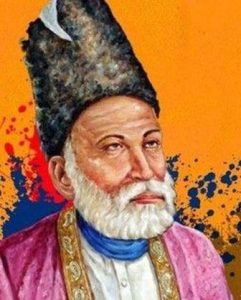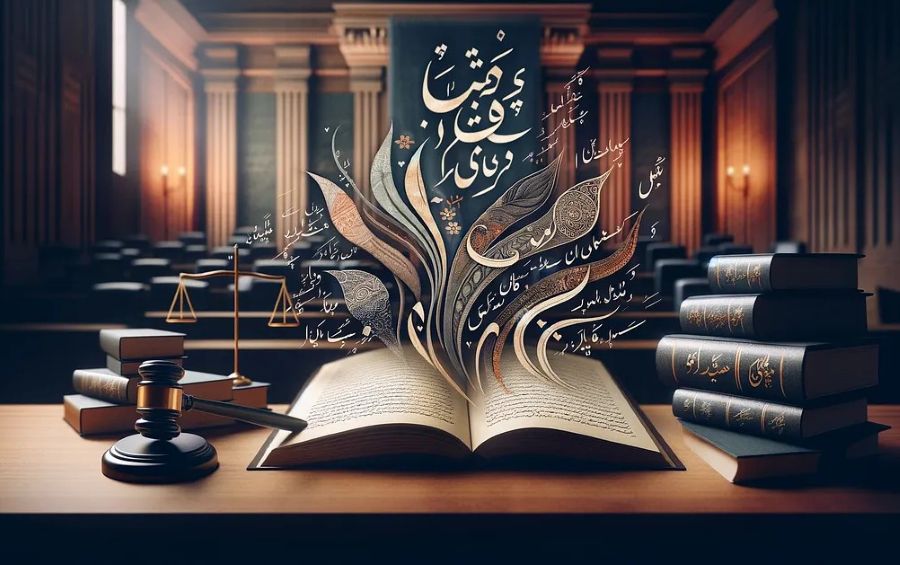Knowledge of literature is of great utility to a judge (as I was for 20 years in India) in writing judgments, as it enhances their impact and expressiveness.
I have delivered many judgments in the Supreme Court quoting verses from Urdu poetry. These are compiled in my book Justice with Urdu, published by Universal Law Publishing Co. Pvt Ltd, New Delhi.
Some examples are:
-
- Amir Minai’s “Qareeb hai yaaron roz-e-mahshar, chhupega kushton ka khoon kyonkar, jo chup rahegi zubaan-e-khanjar, lahu pukaarega aasteen ka” (quoted in Ajitsingh Harnamsingh Gujral vs State of Maharashtra).
- Firaq’s “Har zarre par ek kaifiyat-e-neemshabi hai, ai saaqi-e-dauraan ye gunaahon ki ghadi hai” (quoted in Arumugam Servai vs State of Tamil Nadu).
- Firaq’s “Sar zameen-e-Hind par aqwaam-e-aalam ke Firaq, qaafile guzarte gae Hindustan banta gaya” (quoted in Hinsa Virodhak Sangh vs Mirzapur Moti Kuresh Jamaat).
- Ghalib’s “Marte hai arzu marne ki, maut aati hai magar nahi aati” (quoted in Aruna Ramchandra Shanbaug vs Union of India).
- Ghalib’s “Hai maujazan ek kulzum-e-khoon kaash yahi ho, aata hai abhi dekhiye kya kya mere aage” (quoted in Bhagwan Das vs State of Delhi).
- Ghalib’s “Pinha tha daam-e-sakht qareeb aashiyaan ke, udhne na paaye the ki giraftaar hum hue” (quoted in Buddhadev Karmaskar vs State of West Bengal).
- Faiz’s “Bane hain ahal-e-hawas muddai bhi munsif bhi, kise vakeel karein kisse munsifi chaahen” (quoted in Mehboob Batcha vs State Rep. by Supdt. of Police).
- Faiz’s “Qafas udaas hai yaaro saba se kuch to kaho, kaheen to beher-e-khuda aaj zikr-e-yaar chale” (quoted in Gopal Das Thru. Brother Anand Vir).
- Sahir Ludhianvi’s “Zara mulk ke rehbaron ko bulao, ye kooche ye galiyaan ye manzar dikhao, sanaakhwaan-e-taqdees-e-mashriq ko lao, sanaakhwaan-e-taqdees-e-mashriq kahaan hain” (quoted in Buddhadev Karmaskar vs State of West Bengal).
- Sahir’s “Madad chaahti hai ye Hawwa ki beti, Yashoda ki hamjins Radha ki beti” (quoted in Buddhadev Karmaskar vs State of West Bengal), etc.
There are tens of thousands of Urdu verses by hundreds of poets. A sher (couplet) or nazm (poem) must be mauzu (pertinent and contextually relevant) to be appropriately quoted in a judgment. One cannot cite any verse at random.
When used fittingly, it enhances the beauty and depth of the judgment by highlighting ideas or emotions, making them more poignant and impactful. I attempted this in my judgments, all of which are available online.
In my book, I have explained the meanings of these verses.
Urdu poetry is often written in indirect, allegorical language, relying on allusions, hints, suggestions, and metaphors. It also incorporates Persian words unfamiliar to the common reader, making interpretation challenging.

Ghalib
The great Urdu poet Ghalib had a disdain for the commonplace in poetry. He believed that poetry should not be written in the language of the common man, which is why much of his work is difficult to comprehend. His biographer Hali even noted that about one-third of Ghalib’s verses are so obscure that they are nearly unintelligible.
Urdu poetry often has both an outer, literal meaning and a deeper, hidden significance. One must often strain to grasp what the poet truly intends to convey. I have elaborated on this in several articles, such as those analyzing Faiz’s “Gulon mein rang bhare baad-e-naubahaar chale” and Majrooh Sultanpuri’s “Bula hi baithe ahal-e-haram”.
Additionally, Urdu poetry possesses the unique quality of allowing the reader to derive meanings the poet may never have envisioned. For instance, my interpretation of Ghalib’s sher:
“Pinha tha daam-e-sakht qareeb aashiyaan ke,
Udhne na paaye the giraftaar hum hue.”
(Quoted in Buddhadev Karmaskar vs Union of India)
The word pinha means hidden, daam means net, qareeb means near, and aashiyaan means nest.
The literal meaning of the sher is:
“Near the bird’s nest lay the cruel hunter’s net.
Before the young chick could take its first flight, it was ensnared.”
I found that this sher powerfully depicted the plight of teenage girls who, instead of living happy lives, are trapped in the flesh trade, destroying their futures. Surely, when Ghalib wrote these lines, he never imagined they would one day be applied to sex workers!
In a marvel of condensation, a sher (couplet) can portray an entire historical era, as mentioned here.
The power of Urdu poetry is evident from the fact that when I quoted a sher by Faiz in a judgment, it influenced the Pakistani government to release an Indian, Gopal Das, who had been imprisoned for 27 years. Details can be found in the link below:
To conclude, I believe Urdu poetry will hold great significance in India in the turbulent times ahead. ![]()
Also Read:
Urdu, Hindustani, and Language Politics in UP
Urdu poetry and the transitional era
Disclaimer : PunjabTodayNews.com and other platforms of the Punjab Today group strive to include views and opinions from across the entire spectrum, but by no means do we agree with everything we publish. Our efforts and editorial choices consistently underscore our authors’ right to the freedom of speech. However, it should be clear to all readers that individual authors are responsible for the information, ideas or opinions in their articles, and very often, these do not reflect the views of PunjabTodayNews.com or other platforms of the group. Punjab Today does not assume any responsibility or liability for the views of authors whose work appears here.
Punjab Today believes in serious, engaging, narrative journalism at a time when mainstream media houses seem to have given up on long-form writing and news television has blurred or altogether erased the lines between news and slapstick entertainment. We at Punjab Today believe that readers such as yourself appreciate cerebral journalism, and would like you to hold us against the best international industry standards. Brickbats are welcome even more than bouquets, though an occasional pat on the back is always encouraging. Good journalism can be a lifeline in these uncertain times worldwide. You can support us in myriad ways. To begin with, by spreading word about us and forwarding this reportage. Stay engaged.
— Team PT

